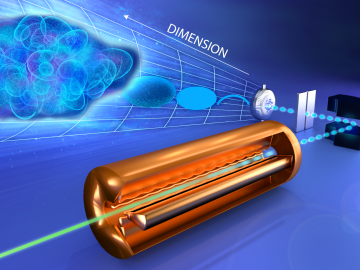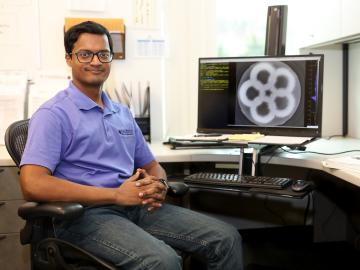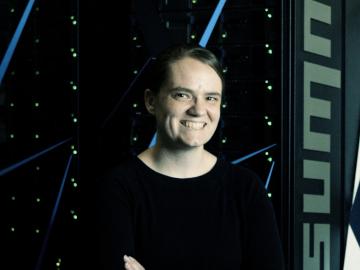
Filter News
Area of Research
- Advanced Manufacturing (4)
- Biological Systems (4)
- Biology and Environment (4)
- Building Technologies (2)
- Chemistry and Physics at Interfaces (4)
- Clean Energy (46)
- Climate and Environmental Systems (1)
- Computational Biology (1)
- Energy Frontier Research Centers (6)
- Fuel Cycle Science and Technology (1)
- Functional Materials for Energy (4)
- Geographic Information Science and Technology (1)
- Isotope Development and Production (1)
- Materials (50)
- Materials Synthesis from Atoms to Systems (3)
- Materials Under Extremes (4)
- National Security (1)
- Neutron Science (13)
- Nuclear Science and Technology (9)
- Nuclear Systems Modeling, Simulation and Validation (1)
- Quantum Condensed Matter (1)
- Reactor Technology (1)
- Sensors and Controls (2)
- Supercomputing (18)
- Transportation Systems (2)
News Type
Date
News Topics
- 3-D Printing/Advanced Manufacturing (4)
- Advanced Reactors (1)
- Artificial Intelligence (1)
- Big Data (1)
- Bioenergy (2)
- Biology (1)
- Biomedical (1)
- Composites (2)
- Computer Science (9)
- Critical Materials (1)
- Cybersecurity (2)
- Environment (1)
- Fusion (2)
- Isotopes (2)
- Materials Science (6)
- Microscopy (3)
- Nanotechnology (5)
- Neutron Science (5)
- Nuclear Energy (6)
- Physics (7)
- Polymers (1)
- Quantum Science (3)
- Security (5)
- Space Exploration (1)
- Summit (2)
- Transportation (1)
Media Contacts



A futuristic experiment simulating warmer environmental conditions has shown that peatland vegetation responds to higher temperatures with an earlier and longer growth period.

The materials inside a fusion reactor must withstand one of the most extreme environments in science, with temperatures in the thousands of degrees Celsius and a constant bombardment of neutron radiation and deuterium and tritium, isotopes of hydrogen, from the volatile plasma at th...


As leader of the RF, Communications, and Cyber-Physical Security Group at Oak Ridge National Laboratory, Kerekes heads an accelerated lab-directed research program to build virtual models of critical infrastructure systems like the power grid that can be used to develop ways to detect and repel cyber-intrusion and to make the network resilient when disruption occurs.

Brixon, Inc., has exclusively licensed a multiparameter sensor technology from the Department of Energy’s Oak Ridge National Laboratory. The integrated platform uses various sensors that measure physical and environmental parameters and respond to standard security applications.

Chang-Hong Yu of the Department of Energy’s Oak Ridge National Laboratory fell in love with running in 2008 and has since completed 38 marathons or longer-distance races. Her passion for long-distance races serves her well chasing neutrinos—electrically neutral subatomic particles th...

If you try to visually represent a spiking neural network, a type of machine learning model, what you often get is an inextricable three-dimensional spiderweb of flashing dots and lines. This visual complexity masks a deeper dynamism, though, as the tangled mass is actually an ever-ch...

When Michael Starke leaves the lab each day, he continues his work, in a sense, at home. The power systems engineer is developing methods to precisely control building electrical loads—and in his off hours, he has automated his own home with upwards of 90 smart devices to manage everything from heat...


